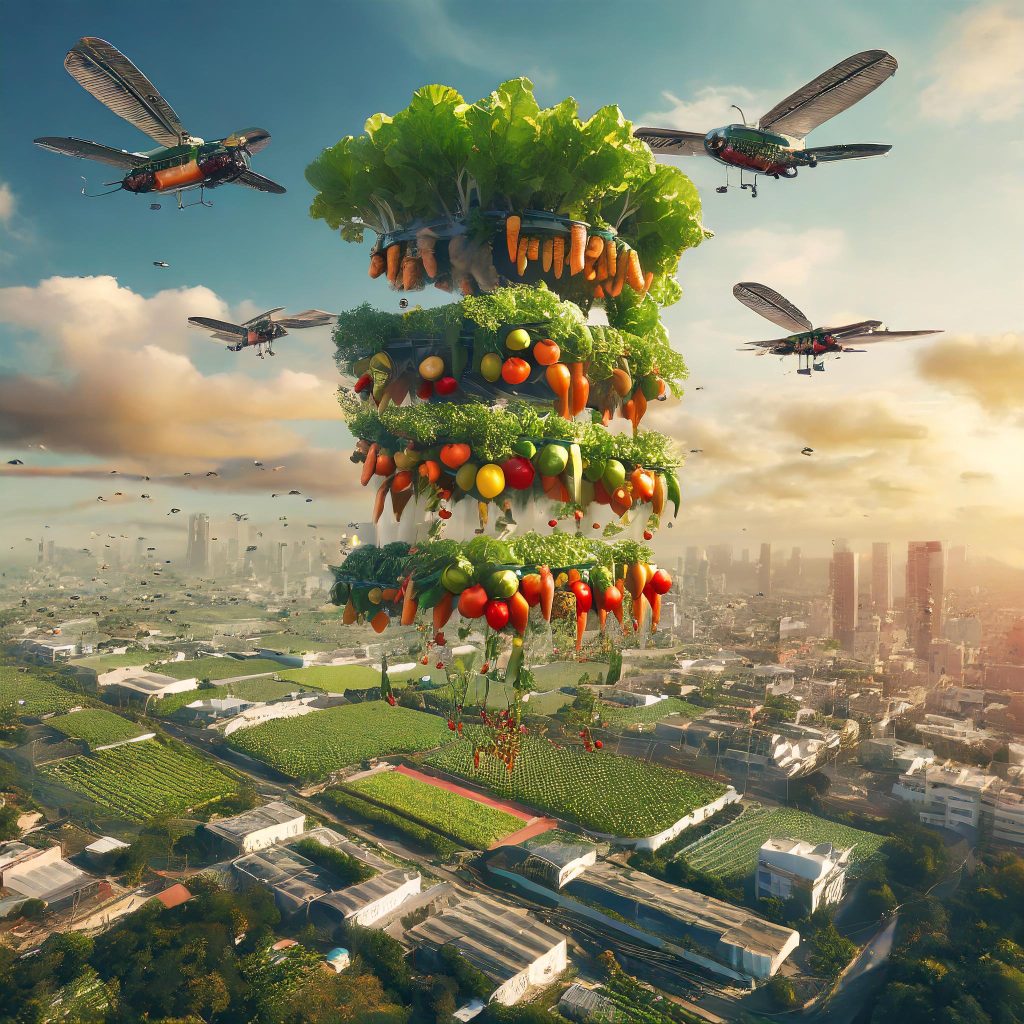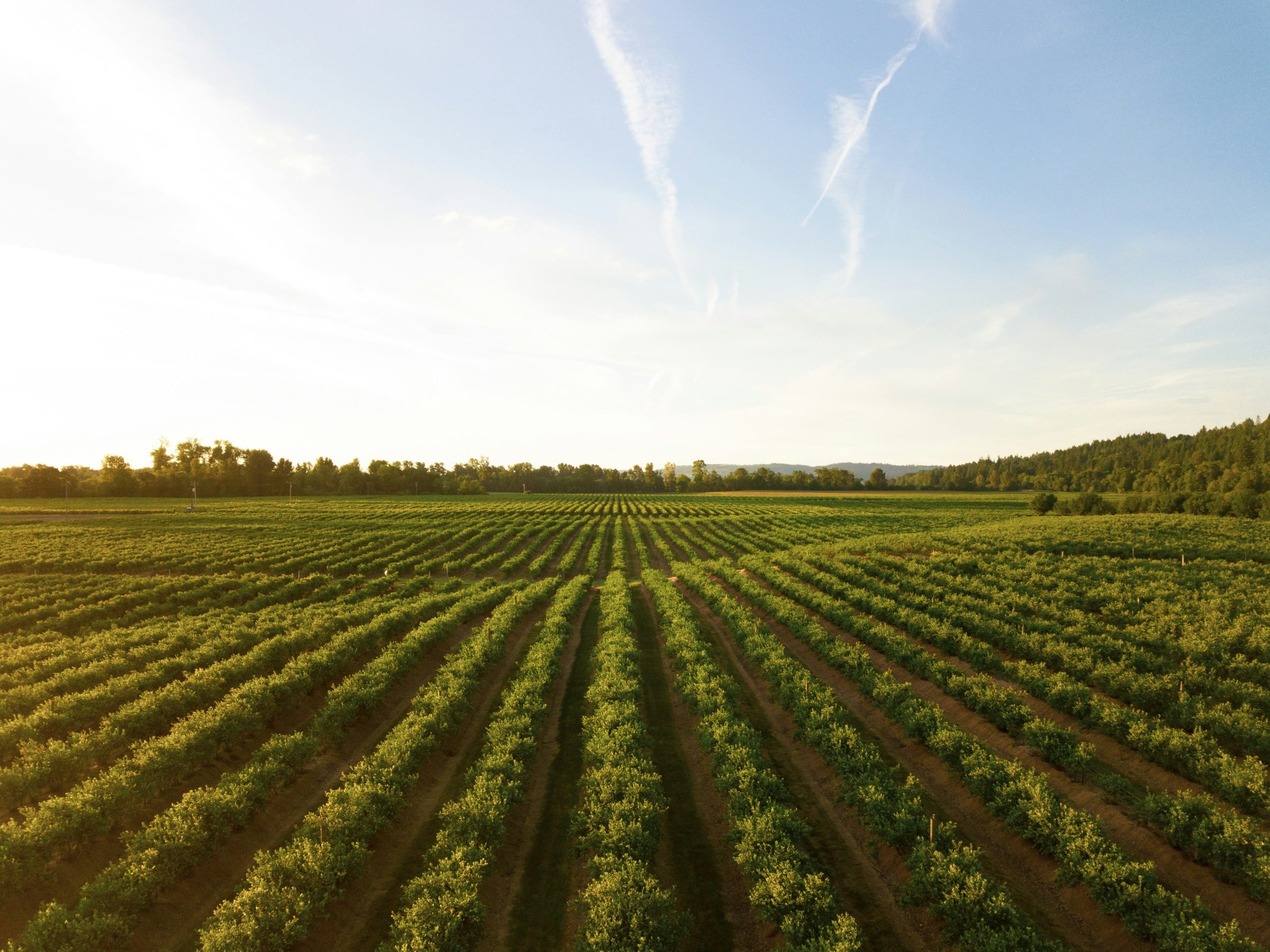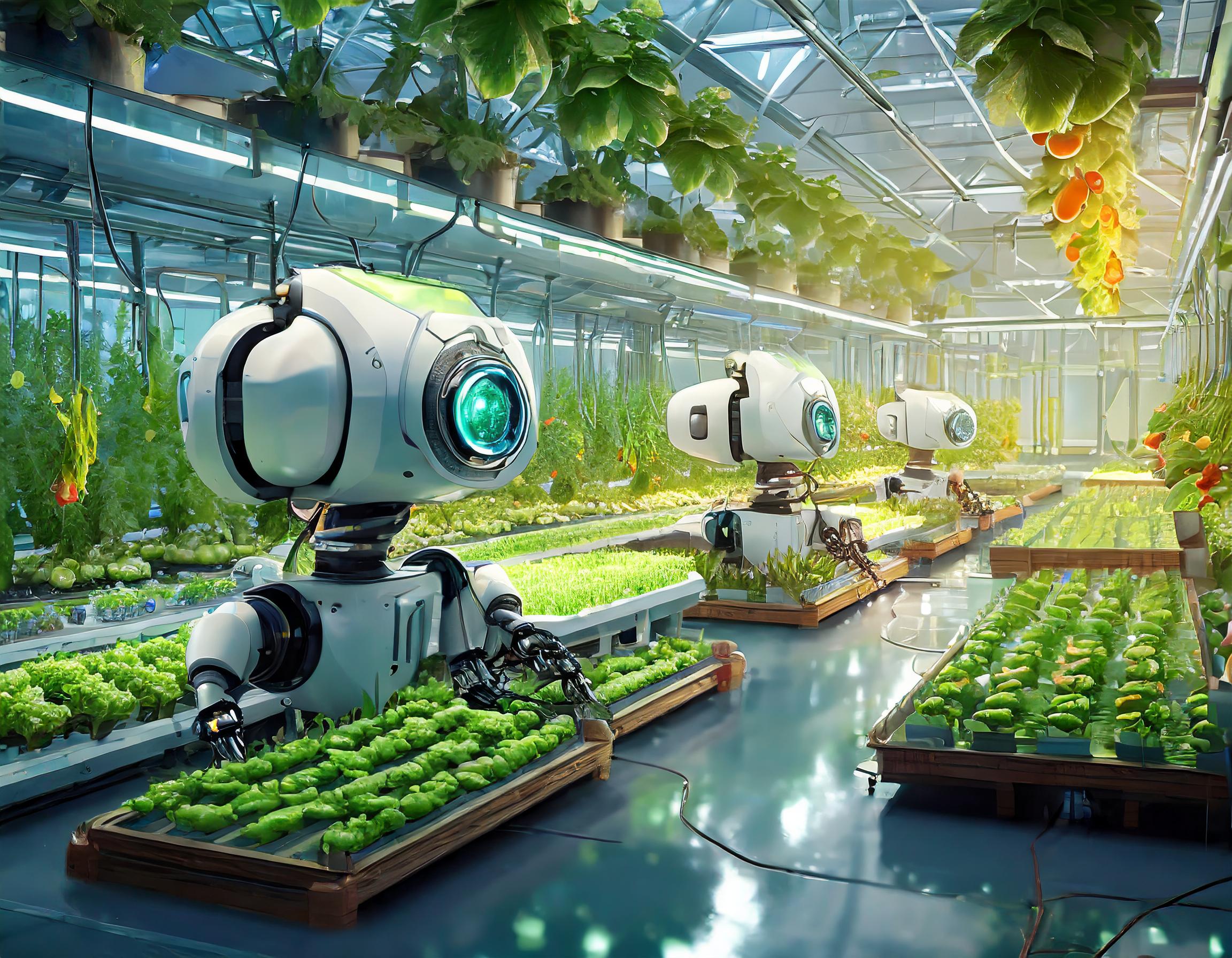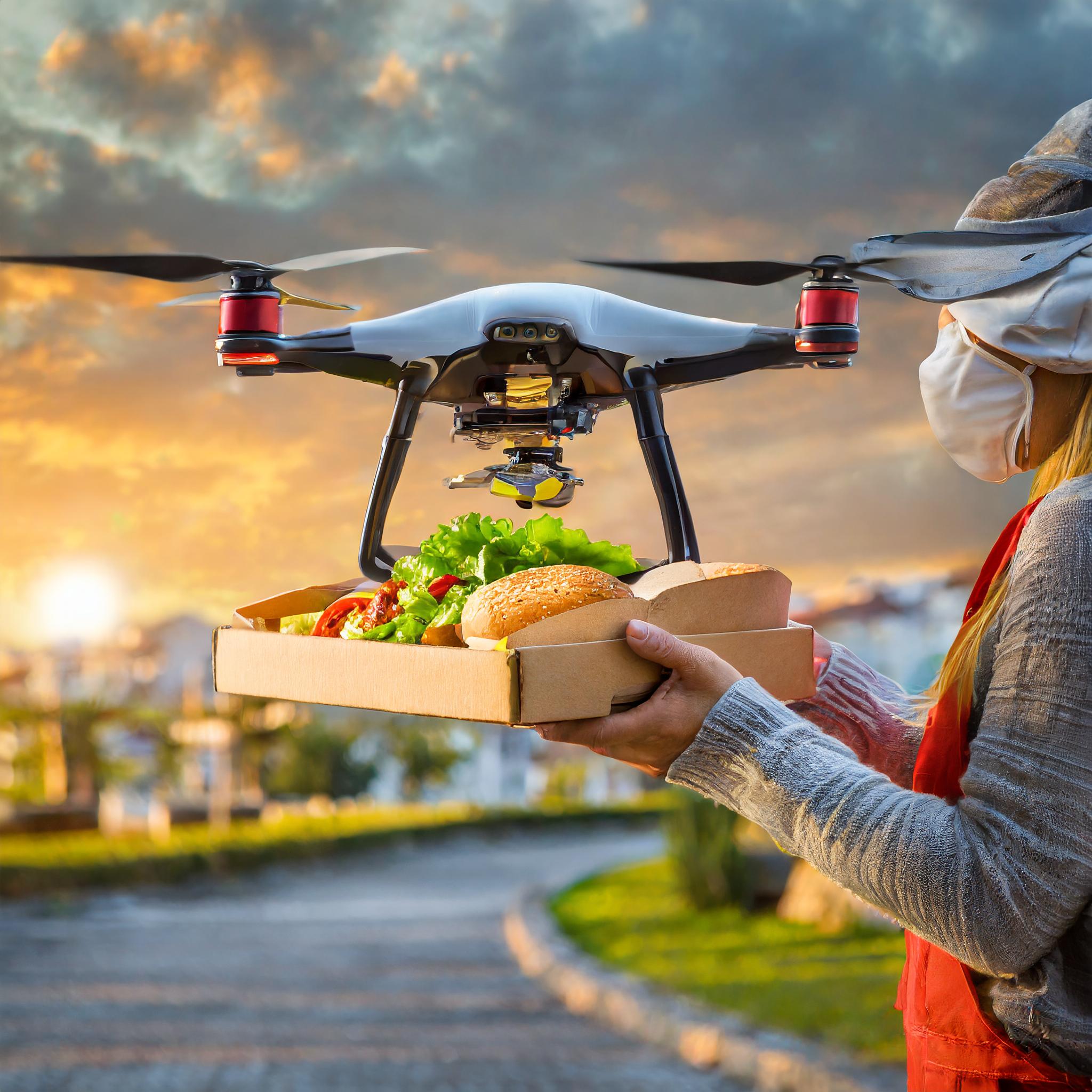At a time of increasing challenges such as population growth, climate change and limited natural resources, the agricultural sector is faced with the need to innovate and adapt to a rapidly changing world. This requires not only embracing new technologies, but also rethinking traditional practices and adopting a holistic approach to food production. This evolution in the agricultural sector goes hand in hand with a change in mindset and a broad acceptance of new ideas and concepts.
At a time of increasing challenges such as population growth, climate change and limited natural resources, the agricultural sector is faced with the need to innovate and adapt to a rapidly changing world. This requires not only embracing new technologies, but also rethinking traditional practices and adopting a holistic approach to food production. This evolution in the agricultural sector goes hand in hand with a change in mindset and a broad acceptance of new ideas and concepts.

The history of food production is closely linked to the development of human civilizations around the world. From the early days of hunter-gatherers to the rise of agriculture and ranching during the Neolithic Revolution, humanity has continually sought ways to grow, harvest and produce food to meet the growing needs of communities. The transition from nomadic existence to sedentary agricultural practices marked a turning point in human history and laid the foundation for the development of advanced civilizations and cultures.
Over thousands of years, agricultural techniques and practices have developed and adapted to changing conditions and needs. The invention of agricultural tools, such as the plow and the scythe, during ancient times improved the productivity and efficiency of agricultural activities. During the Middle Ages, agricultural techniques were further refined, including the use of crop rotation and the building of wind and watermills to provide energy for agricultural activities. The Industrial Revolution brought further transformation, with the introduction of machinery, fertilizers and chemical pesticides that dramatically increased food production.


The modern agricultural sector is characterized by a constant search for innovations that increase productivity, improve efficiency and reduce environmental impact. Some of the key innovations that have transformed the agricultural sector include:
Mechanization: The advent of agricultural machinery such as tractors, combine harvesters and seeders has reduced labor intensity and greatly increased the productivity of agricultural activities.
Genetic engineering: Through genetic engineering, crops can be modified to be more resistant to diseases, pests and extreme weather conditions, leading to improvements in crop yields and quality.
Precision agriculture: Using advanced technologies such as GPS, drones, satellites and sensor technologies, farmers can make more accurate decisions about sowing, fertilizing, irrigation and crop protection, resulting in more efficient use of resources and reduced environmental impact.


Vertical Farming: This innovative approach involves growing crops in stacked layers, often indoors or in controlled environments, significantly increasing productivity per square meter and reducing the need for land, water and pesticides.
Biotechnology: Using techniques such as CRISPR-Cas9, scientists can edit specific genes to improve crops in terms of yield, nutritional value, taste and shelf life, thereby improving food supply.
Blockchain technology: This emerging technology is used to improve transparency and traceability in the food chain, giving consumers access to detailed information about the origin, production practices and quality of food products.
These innovations allow modern agricultural systems to be managed more efficiently, increasing productivity while reducing environmental impact.
Blockchain technology: This emerging technology is used to improve transparency and traceability in the food chain, giving consumers access to detailed information about the origin, production practices and quality of food products.
These innovations allow modern agricultural systems to be managed more efficiently, increasing productivity while reducing environmental impact.
Unknown, nd
Innovative agriculture isn't just about adopting new technologies; it's about changing mindsets and embracing new ways of thinking.
AeroFarms represents a visionary concept that is shaping the future of the agricultural sector. In essence, AeroFarms involves the use of advanced vertical farming technologies, controlled environments and state-of-the-art lighting systems to produce crops at scale, with minimal environmental impact.
The term “flying greenhouses” reflects this progressive approach, replacing the traditional horizontal expanse of agricultural land with vertical layers within controlled facilities. This opens up new possibilities for agricultural practices in densely populated urban areas, where space is at a premium and traditional farming methods are often limited.
By embracing AeroFarms, we can move food production to where people live, shortening the distance between producer and consumer. This not only results in a reduced need for transportation and logistics, but also in improved freshness and quality of the food that is produced.
In addition, AeroFarms offers a sustainable solution to the growing demand for food by using more efficient water and energy use and less reliance on pesticides and other chemicals that can harm the environment. This contributes to the pursuit of a more resilient and sustainable food production, capable of meeting the needs of current and future generations, without exceeding the boundaries of our planet.
A fascinating aspect of innovation in the agricultural sector is the concept of meat breeding plants, a groundbreaking approach that has the potential to completely change the way we produce meat. Beef farming involves genetically modifying plants to produce meat proteins, providing a sustainable and ethical alternative to traditional meat production.
The idea behind meat culture plants is based on the ability of plants to produce large amounts of protein, which can then be modified to mimic the taste, texture and nutritional value of meat. Through genetic modification, scientists can create plants that produce specific proteins that naturally occur in meat, such as myoglobin (responsible for the red color of meat) or collagen (which provides the texture and firmness of meat).
One of the benefits of farmed meat plants is their potential to reduce the demand for traditionally farmed meat while minimizing the environmental impact of the meat industry. Since meat farming plants do not require animals and require fewer raw materials and resources, they can provide a more sustainable alternative to traditional meat production. Additionally, beef farms can be grown in controlled environments, which can minimize the use of pesticides and other harmful chemicals.
With further development and adoption, meat-farmed plants could represent a revolutionary shift towards a more sustainable and ethical approach to meat production, which could reduce our dependence on traditional livestock farming while having a positive impact on the environment and animal welfare.
An emerging approach to food delivery that is rapidly gaining traction is the use of drones for efficient delivery of food from farms to consumers. This concept not only offers opportunities to reduce logistics costs and shorten delivery times, but it also has the potential to improve food distribution and reduce food waste, especially when applied in urban areas such as Ghent.
In the context of Ghent, this concept can be applied using advanced data analysis systems, logistics and drone technology. Here's a detailed description of how this might work:
- Data collection and analysis: A central system continuously collects data on the food needs, preferences and locations of Ghent residents. This data can be collected from various sources such as apps, online surveys and food purchase history. Advanced algorithms and machine learning are then used to identify trends and patterns, allowing the system to make predictions about which types of food will be most desired where and when.
- Logistics optimization: Based on these predictions, the system plans efficient routes for the drones to make food deliveries. This takes into account factors such as distance, traffic patterns and weather conditions. By using advanced logistics techniques such as automated route planning, the system can minimize delivery times and maximize efficiency.
- Drone system: For the actual delivery, a fleet of drones are used that are specially designed for the safe and efficient delivery of food. These drones are equipped with advanced navigation systems, sensors for obstacle detection and high-quality camera systems for real-time monitoring. They are loaded with the necessary food supplies and leave from central distribution points.
- Delivery: Once the drones are loaded, they follow the planned routes to the selected delivery locations in Ghent. The drones can land autonomously at specific delivery points, such as prearranged drop-off points near recipients' homes. Here, consumers can receive their ordered food easily and quickly, without even having to leave their home.
- Real-time adjustments: The system can make real-time adjustments to delivery routes and times based on changing conditions, such as traffic congestion or unexpected changes in food demand. This ensures that delivery remains efficient and flexible, even in a dynamic urban environment such as Ghent.
By applying this advanced system, food producers can quickly and efficiently deliver their products to consumers in Ghent, while minimizing food waste and reducing logistics costs. This contributes to an improved food supply in urban areas and offers consumers more convenience and choice when purchasing fresh and high-quality products.
This innovative delivery system focuses on delivering fresh vegetables directly from AeroFarms to consumers in Ghent. Unlike traditional stores where produce can sometimes sit for weeks before being sold, this system guarantees that the vegetables delivered are of the highest freshness as they come straight from the source. This not only offers consumers the opportunity to enjoy top quality produce, but also to benefit from a faster turnaround time between harvest and consumption, preserving the nutritional value and freshness of the vegetables.
Innovation plays a crucial role in the evolution of the agricultural sector, and the continued search for new technologies and approaches will be essential to ensuring a sustainable and resilient food supply for future generations. By continuing to invest in research, development and implementation of innovative solutions, the agricultural sector can meet the challenges of the 21st century and have a positive impact on people and the environment.
